In one of my favorite scenes from the movie “The Matrix”, Neo visits the small, cramped urban apartment of the Oracle, a cigarette-smoking, cookie-making, grandma-esque program with clairvoyant powers ("Not quite what you were expecting, right?").
In the Oracle's living room Neo finds a number of "potentials," young children who understand that reality is not what it seemed in the matrix. One such potential, a shaven-head boy, shows Neo a spoon that he can bend with his mind. Famously, he says, "There is no spoon...it is not the spoon that bends; it is only yourself."
The sudden revelation that reality was not what it seemed, what everyone incessantly said it was, is the turning point for Neo, who himself bends the spoon.
Lately, in the world of marketing, there's a flood of predictions and declarations that digital marketing is dead. Or rather that it never lived. PepsiCo's executive, Brad Jakeman, late in 2015, in "fiery, truth-telling presentation" went so far as to say digital marketing was "the most ridiculous term [he'd] ever heard of," that "there is no such thing as digital marketing. There is marketing—most of which happens to be digital."
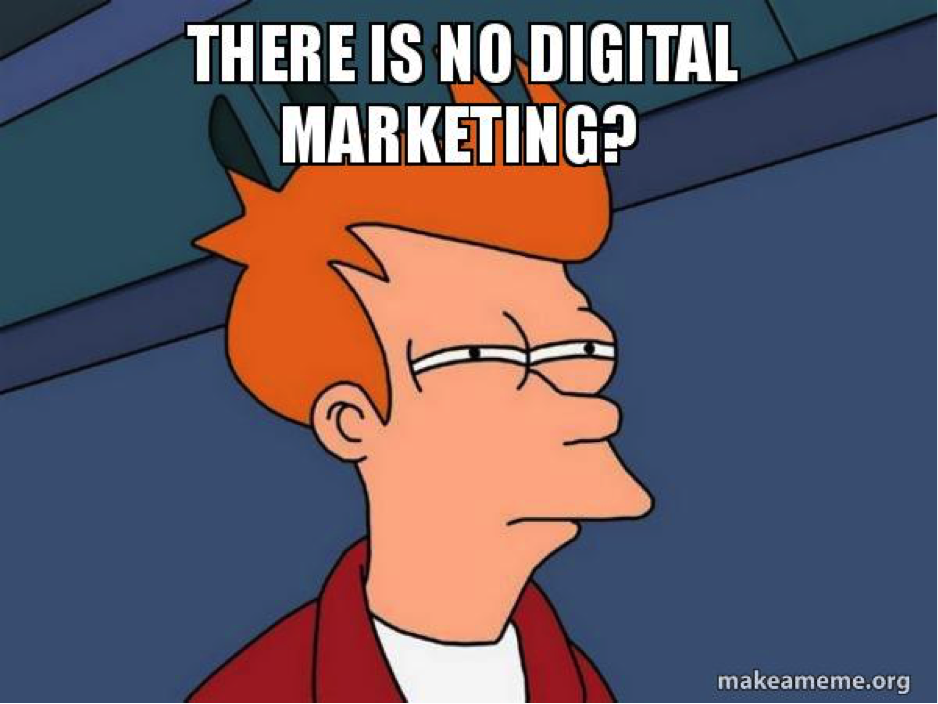
I get where the marketing experts are going with this, though it sounds a bit like mincing words. And the reality is that no matter how much we want to change it, people will continue using the phrase digital marketing. Google it and some 225 million hits appear. And each month, some 110,000 people use the phrase in a Google search. It's not going away, no matter how much the purists want it to.
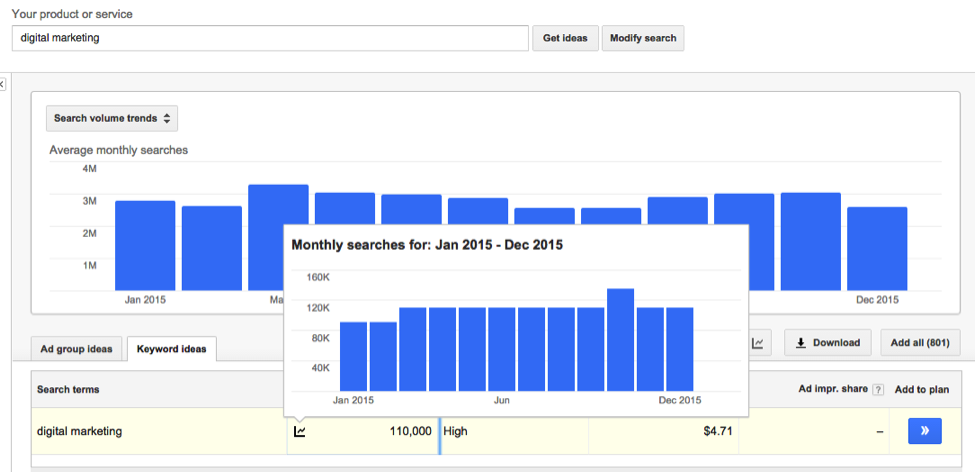
Screen shot from Google Adword Keyword Planner for term “Digital Marketing”
All of this debate around terminology most likely sounds like a noisy gong to the average business owner whose main priority is to do whatever it takes to make a sale. And if digital marketing is what needs to be used (as apparently every marketing consultant on the planet is telling you it is), then by golly, you better jump in with both feet. Get that website up! Start the social medias! Do. All. The. Things.
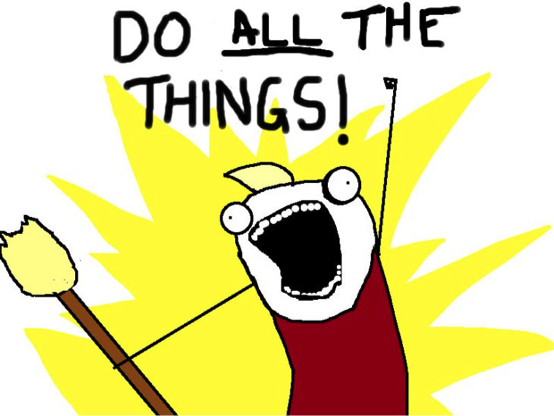
Source: Alli Brosh
But pedantry aside, there’s some valuable lessons the owner of a small business can learn from the push back on digital marketing. Namely, if you don’t understand how marketing works, undertaking a digital marketing initiative will be a very expensive (and frustrating) exercise in futility.
As both a former owner of an interactive creative agency and later as a director at another, I worked with a number of small to mid-sized businesses that thought digital marketing would be their savior. They mistakenly assumed that the only reason their website wasn’t converting was because it felt a bit dated or wasn’t “mobile” enough. They believed their social media strategy wasn’t paying off because they didn’t have enough content. They assumed that if they built it, whatever “it” was, the sales would come.
Sadly, as Josh Walovitch and Charles Lockwood of Suffolk University Boston so eloquently put it:

And the same holds true for both digital and social media advertising, whose click through rates, let alone conversion rates, are abysmally low.

Source: Smart Insights
Yet, according to our recent survey of over 1,000 small businesses, investing in their website and ramping up digital advertising and social media is overwhelmingly the 2019 marketing priority for business owners.
When I was in agency land, we always pressed upon our clients the crucial need to spend time digging into the core of the business and customer base to build a sound brand and marketing strategy as the foundation of any digital asset or service. From experience, we knew that more often than not, the underlying problem was not functional or tactical but rather strategic.
Often, we were ignored. And when the new website or ad campaign didn’t produce as desired (despite our warnings!), we were also blamed.
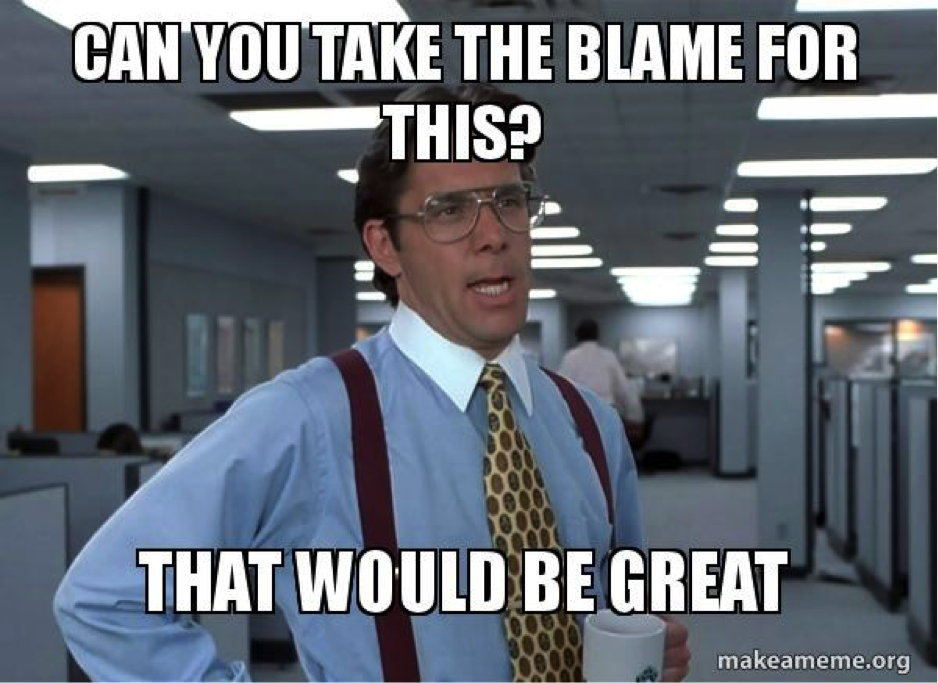
Every agency client, ever.
But sometimes we had clients who really got it, doing the hard work with us to establish the proper strategies and to build an appropriate digital toolbox to tactically execute that strategy. One such client was SCI Solutions, a SaaS-based healthcare platform that empowers provider networks and health systems to get the most economic value from their community partnerships.
We spent over a year working with SCI to establish a new brand strategy, identity, and content marketing strategy before ever building a digital asset. Concurrently, they did the hard work of beefing up their demand marketing strategy, personas, and nurture campaigns. The website we ultimately delivered was built to facilitate the strategy, not the other way around. The work paid off.
SCI Solutions recently was profiled on MarketingSherpa for the following results:
- Exceeded the 2015 MQL target by 31 percent
- Exceeded the 2015 nurturing database target by 151 percent
- Achieved 35 percent growth in opportunities attributed to electronic marketing programs
- Reduced billable database record by 17 percent (Most marketing automation systems bill by the number of people in the database. By segmenting and analyzing the database, they’ve been able to reduce the number of records and, consequently, reduce charges.)
What was the difference? Why did digital marketing payoff so handsomely for SCI when it falters for so many others?
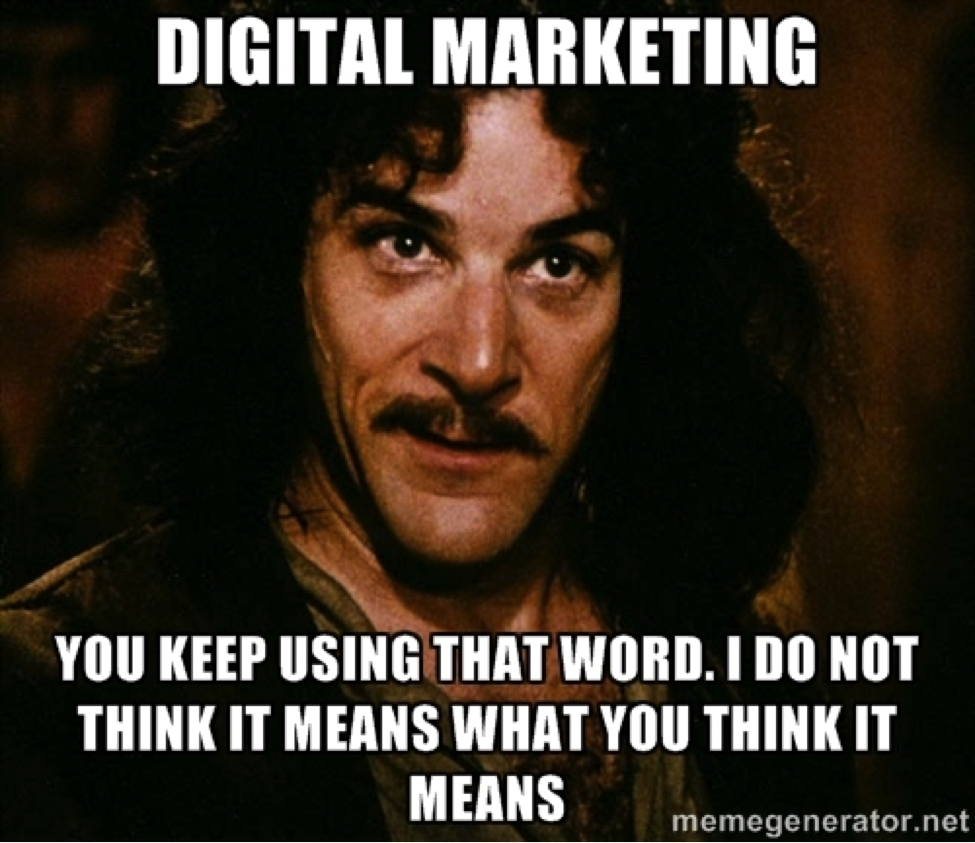
The short answer: in order for the tactic of digital marketing to work, you first must first have a solid marketing strategy in place.
To get back to the original discussion of whether there is or isn’t digital marketing, if you don’t have a solid marketing strategy in the first place, there is no digital marketing (at least not effectively).

At Keap, we believe in this so much that we’ve created our own strategic marketing system that we’ve seen countless small businesses use to great success: Lifecycle Automation.
The Lifecycle Automation model provides a simple framework owners of small businesses can use to design a marketing strategy that will help you attract customers, grow sales, and deliver an experience that wows customers. It’s divided into three key phases: attract, sell, and wow.
Already convinced? Download our Lifecycle Automation Planner right now and get to work!
Attract
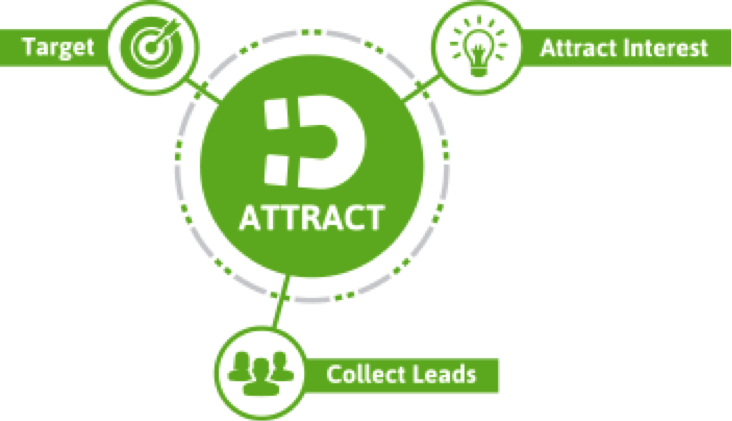
The Attract phase will help you clarify who your best customers are, identify what they need, and understand how to connect with them.
Know your target market
Attempting to reach everybody with your product or service is not only inefficient, it's also very expensive. Nobody can afford to target everybody. That's why it's important to narrowly define your target customer, and focus your marketing dollars on the market that is more likely to buy from you than other markets. You can clearly define your target market by taking a look at your current customer base, evaluating why they buy from you, and grouping them based on similar interests.
Attract interest
Once you identify your target customers, you need to find out where they are most likely to come into contact with your brand messaging, and also where they’ll be the most receptive to it. Think about locations, both online and in person. Are they on a particular social media platform? Do they attend local business events? Are they members of a local community or work in the neighborhood?
After you identify where they spend their time, start focusing your marketing efforts in those places. Perhaps you need to join the local networking group, open up a Twitter account, or spend some money on advertising. Be where your customers are, and start engaging with them in an authentic, helpful, and personable way.
Collect leads
As you attract more consumers to your business, you’ll want to make sure they don’t leave and forget about you. Give them something to take with them in exchange for their contact information. This is called a lead magnet and can be anything of value, such as a free report, coupon or giveaway.
Once you’ve attracted the right audience, you need to either make the sale or get their contact information so you can follow up with them. Build trust and give your prospects a reason to opt-in. E-Books, podcasts, and webinars are just a few content assets you can offer to build trust with your audience. Make it easy to opt-in with the right lead capture tools.
Sell
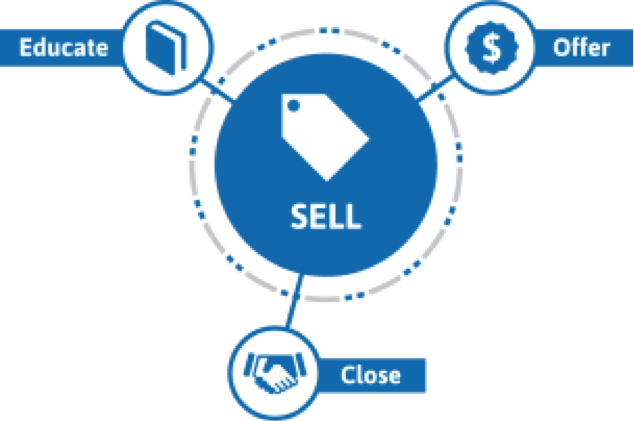
The Sell phase helps you to create content that connects with your customers and guides them along the buying process.
Educate
Consumers pay attention to brands when motivated to do so. The best way to earn their attention is through exceptional interactions and valuable education. To create valuable educational materials, you need to understand the needs and wants of your target consumers, outlined in the Attract phase.
As you build out a content strategy, consider how your product or service serves your target customer’s basic, psychological or self-fulfillment needs. Then, build foundational content on your website, blog, social networks or other communication platforms to address those needs.
Offer
When you understand your target customer’s buying process, you can identify the optimal time for a special offer. By observing past customers’ actions, you’ll be able to create a buying process funnel. Then you can match your sales process to their buying process.
If you have a sales team, or if you are the entire sales team, optimize your resources so that you spend time with potential customers that are most ready to purchase. Lead scoring allows you to assign a score to your lead based on the actions they’ve taken. This tactic places the leads that are the most likely to convert at the top of your list to contact. With your buying process funnel aligned with your sales process, you can see the best time to introduce a sales promotion to a consumer—when they’re evaluating options.
Close
Closing the sale involves more than just an exchange of money or signed documents. In a direct sales conversation, the close involves clear communication, good presence, and written documentation. In an e-commerce business, the close involves ensuring that there is a mechanism for payment collection and order processing. Regardless of your business type, the close is the signal that the deal has been negotiated and you can now begin the process of delivery.
- Make procedures easy: Implement clear and effective procedures for closing the sale. Train your sales staff on closing procedures.
- Create clear documentation: Sales Documents convey how "together" you are as an organization—did you throw something together, or take the time to understand, customize, and prioritize the relationship?
- Streamline the payment process: Have a clear and effective mechanism for collecting payments and processing orders. Automate the payment process whenever you can.
Wow
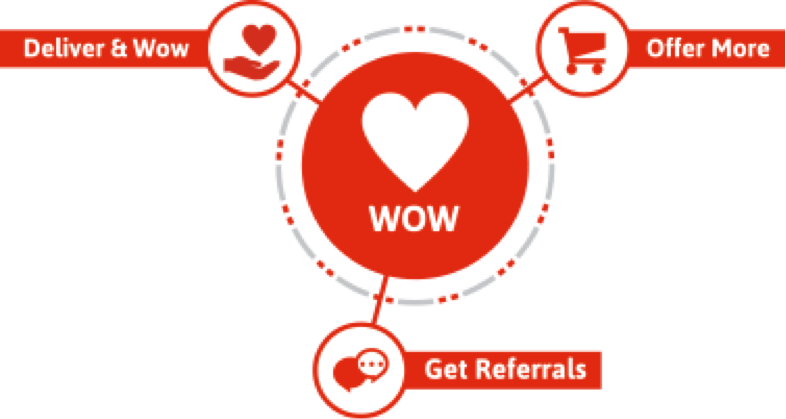
In the Wow phase, you'll learn how to anticipate your customers' needs, go the extra mile and deliver more than what you promised.
Deliver and wow
Wowing your customers is about providing more than what you promised and creating a delightful experience. While this may seem simple and obvious, the hustle and bustle of daily work causes customer delights to often get overlooked.
To wow your customers, make sure that your after-sales service provides the product or service in a timely manner. Then go above and beyond their expectations by providing additional value that leverages your strengths.
Offer more
After providing an exceptional experience, you are in a position to offer additional products or services to your customers. Determining what to offer and when to offer it involves a bit of strategy.
Determine what related products or services will help your customers, and create a solution. The solution can be additional products, services, or tips and resources related to their needs. Timing and positioning are important. Here are three ways to tactfully increase your revenue while continuing to be helpful:
- Cross sell: Customers aren’t always aware of the perfect product or service pairings, and may be willing to purchase related items that enhance their experience.
- Upsell: Listen to your customers and try to understand their needs. They might be willing to pay extra for special treatment, warranties or monthly programs.
- New products: Help your customers by notifying them of new products or services that could enhance their lives or experience with your brand.
Get referrals
You’ll spend less money marketing to existing customers than attracting new ones. This is why it’s so important to wow customers from the start.
It’s important to anticipate their needs and deliver more than what you promised in either quality or quantity. Or, try recommending something new that satisfies their needs. Leverage your strengths, because that’s what will set you apart from your competition.
Referrals are one of the cheapest ways to expand your business, and wowing your current customers is the fastest way to earn referrals. Asking and rewarding customers for a referral completes the Wow experience. Effective referral programs are a big win for small businesses because they help customers develop habits that include your company. Consider establishing a referral program with rewards that are easy to obtain. Providing small gift cards, discounts or movie tickets for referrals is a great way to demonstrate your appreciation.
In "The Matrix", Neo could have easily dismissed the young boy who said there was no spoon. After all, it was right in front of his nose. Everyone could see the spoon. But rather than go with what seemed apparent, Neo instead chose to see there was an underlying reality beyond the spoon. Digital marketing is the same thing. There really isn’t digital marketing. There is just marketing. Understanding this fully allows you to manipulate the marketing “spoon,” whether digital or traditional, any way you want—and with great success.
By mapping out and implementing these Lifecycle Automation strategies, a small business is ready to determine the right mix of digital marketing tactics and tools it needs to invest in order to successfully grow business.
Only then will digital marketing be a true and effective reality.


